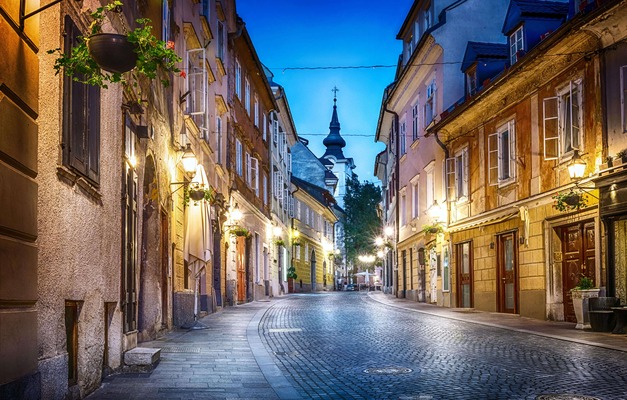
Essential Italy: Rome, Florence & Venice in 7 Days
 7 Day Tour of Rome, Florence and Venice
7 Day Tour of Rome, Florence and Venice
Overview
Trip Map
Itinerary
Inclusions
Reviews







7 Days 6 Nights
Best Time: Jan-Dec
Cultural Exploration
History Buffs
This captivating 7-day travel itinerary brings you to Rome, Florence, and Venice, where you'll toss a coin into the iconic Trevi Fountain, explore the artistic masterpieces of the Uffizi Gallery, and stroll along the canals of Venice. In Rome, you'll experience ancient history on visits to the Colosseum and Roman Forum. After visiting the Vatican City, you'll travel by train through the beautiful Tuscan countryside to reach Florence, the quintessential Renaissance city. Conclude your journey in Venice, as its picturesque canals create an unforgettable atmosphere. A Gondola ride at sunset will put the icing on the cake of your epic vacation.
- Includes an airport transfer, private guided tours in Rome and Venice, and a Florence tasting tour
- Tour the Vatican City and see the Sistine Chapel and St Peter's Basilica with your own eyes
- Wander the Uffizi Gallery marveling at Renaissance masterpieces from Botticelli and Raphael
- Explore the Boboli Gardens: A lush Renaissance oasis in Florence's heart
- Delight in Venice's unique atmosphere on the Piazza San Marco and venture into the Doge's palace
- Cross the Grand Canal on Venice's Rialto Bridge, an iconic stone archway offering breathtaking views
- Enjoy detailed travel guidance with the Go Real Travel mobile app, ensuring a stress-free trip
This captivating 7-day travel itinerary brings you to Rome, Florence, and Venice, where you'll toss a coin into the iconic Trevi Fountain, explore the artistic masterpieces of the Uffizi Gallery, and stroll along the canals of Venice. In Rome, you'll experience ancient history on visits to the Colosseum and Roman Forum. After visiting the Vatican City, you'll travel by train through the beautiful Tuscan countryside to reach Florence, the quintessential Renaissance city. Conclude your journey in Venice, as its picturesque canals create an unforgettable atmosphere. A Gondola ride at sunset will put the icing on the cake of your epic vacation.
- Includes an airport transfer, private guided tours in Rome and Venice, and a Florence tasting tour
- Tour the Vatican City and see the Sistine Chapel and St Peter's Basilica with your own eyes
- Wander the Uffizi Gallery marveling at Renaissance masterpieces from Botticelli and Raphael
- Explore the Boboli Gardens: A lush Renaissance oasis in Florence's heart
- Delight in Venice's unique atmosphere on the Piazza San Marco and venture into the Doge's palace
- Cross the Grand Canal on Venice's Rialto Bridge, an iconic stone archway offering breathtaking views
- Enjoy detailed travel guidance with the Go Real Travel mobile app, ensuring a stress-free trip

Vatican City
Churches & Monasteries

Roman Forum & Palatine Hill
Historic Landmarks

Piazza del Duomo
Churches & Monasteries

Galleria dell'Accademia
Museums & Galleries

Grand Canal
European History

Saint Mark's Basilica
Architecture
Must see sights

Vatican City
Churches & Monasteries

Roman Forum & Palatine Hill
Historic Landmarks

Piazza del Duomo
Churches & Monasteries

Galleria dell'Accademia
Museums & Galleries

Grand Canal
European History

Saint Mark's Basilica
Architecture
Starting from
$2139
per person
 Not included
Not included Secure Your Customizable Trip
Enter your details to embark on a journey that can be tailored just for you.
Start
Travelers
0 travelers
Add Room
Remove Room
Preferred Hotel Stars
Select Hotel Stars
Craft Your Own Itinerary
Select your interests and destinations for a trip plan inspired by you.
Italian Classics in a Week Trip - Map & Itinerary
Enable/Disable Map Scrolling
Click To Make Map Interactive

Italian Classics in a Week Trip Timeline
 Edit Details
Edit DetailsArrival
2 nights
Rome
Italy
Train: 2h
2 nights
Florence
Italy
Train: 2.5h
2 nights
Venice
Italy
Departure
Day-By-Day Itinerary of Italian Classics in a Week Trip

Day 1
Arrive Rome
Day 1
Arrive Rome



To Be Determined
Private Transfer to your Hotel
Upon your arrival in Rome, we will guide you through customs and passport control procedures. A private driver will be scheduled based on your flight’s arrival time and will meet you inside the terminal holding a sign with your name. This is an exclusive transfer for your party alone—no ride-sharing involved. The fare for the transfer is already included in your itinerary package, ensuring a smooth and direct trip to your hotel.

Day 1
Arrive Rome


Day 1
Arrive Rome




To Be Determined:
Private Transfer to your Hotel
Mid-Day/Afternoon:
Colosseum
Afternoon/Late Afternoon:
Forum (Ancient Rome)


Day 2
Rome
Day 2
Rome





9:00 AM - 12:00 PM
Grand Tour of Historic Center, Guided
Explore the timeless beauty of Rome’s historic center on a three-hour private guided walking tour. This immersive experience covers some of the Eternal City’s most celebrated landmarks, including Piazza del Popolo, the Spanish Steps, the Trevi Fountain—famous for Anita Ekberg’s plunge in Fellini’s La Dolce Vita—the Column of Marcus Aurelius, the Pantheon, and the incomparable Piazza Navona, widely hailed as Italy’s most beautiful square.

Spanish Steps
Climb the elegant staircase immortalized in the film Roman Holiday.
Show More

The Trevi Fountain
Visit Rome’s famous fountain where tossing a coin ensures your return to the city.
Show More

Pantheon
Step inside one of ancient Rome’s best-preserved architectural wonders, now a church.
Show More

Spanish Steps
Climb the elegant staircase immortalized in the film Roman Holiday.
Show More

The Trevi Fountain
Visit Rome’s famous fountain where tossing a coin ensures your return to the city.
Show More

Pantheon
Step inside one of ancient Rome’s best-preserved architectural wonders, now a church.
Show More

Spanish Steps
Climb the elegant staircase immortalized in the film Roman Holiday.
Show More
prev
next

Day 2
Rome


Spanish Steps
 Highlight of Grand Tour of Historic Center, Guided
Highlight of Grand Tour of Historic Center, GuidedClimb the elegant staircase immortalized in the film Roman Holiday.
Constructed between 1723 and 1726 to connect Piazza di Spagna with the church of Trinità dei Monti, the Spanish Steps quickly became a beloved haunt for artists, poets, and writers. The 137-step staircase, adorned with graceful balustrades, remains a magnet for visitors today, yet still retains a romantic charm, even in peak season. Arrive in early May to see the steps blanketed with vibrant azalea displays. Designed with subtle religious symbolism, the three flights and three landings reflect an allusion to the Holy Trinity, showcasing an inspired blend of spirituality and urban design.
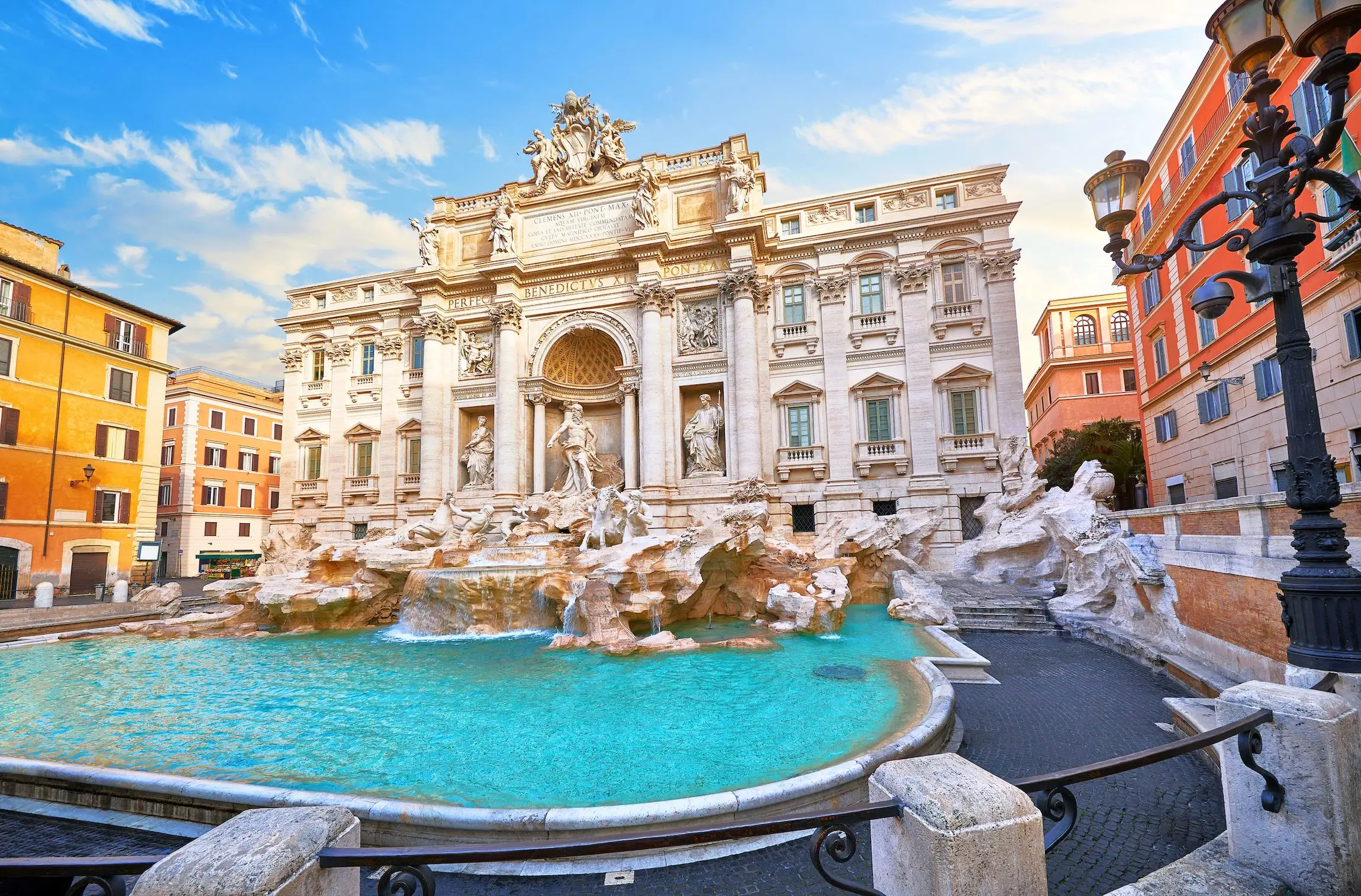
The Trevi Fountain
 Highlight of Grand Tour of Historic Center, Guided
Highlight of Grand Tour of Historic Center, GuidedVisit Rome’s famous fountain where tossing a coin ensures your return to the city.
Tucked within a maze of narrow streets, the Trevi Fountain seems to spring out from nowhere, yet it draws a constant stream of admirers. Its fame was sealed by Anita Ekberg’s unforgettable scene in Fellini’s La Dolce Vita. Visitors flock here daily to toss coins over their shoulders into its sparkling waters—a tradition believed to guarantee a future return to Rome. Each morning, the coins are collected and donated to the Catholic charity Caritas, giving the tradition a charitable purpose as well.
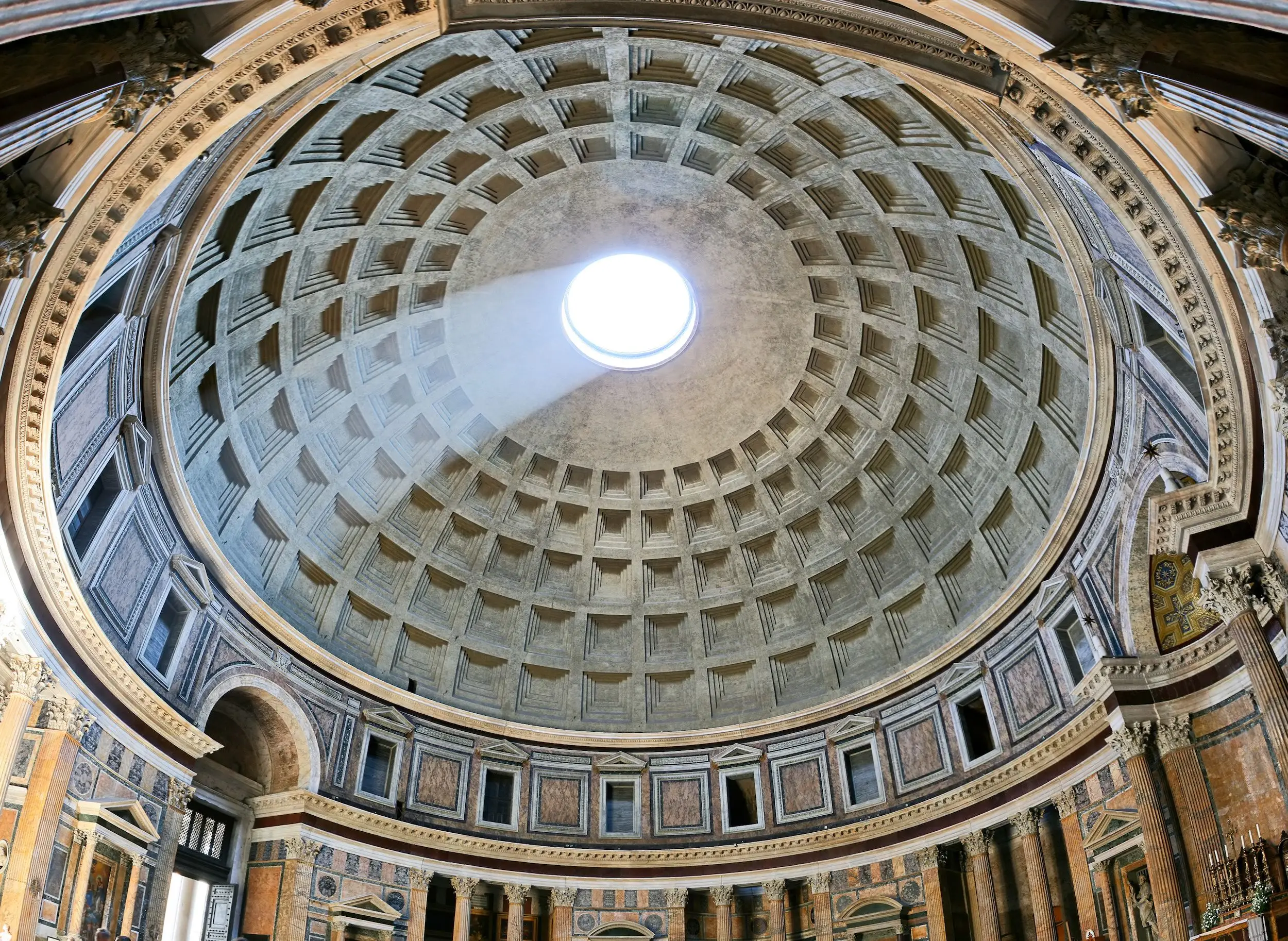
Pantheon
 Highlight of Grand Tour of Historic Center, Guided
Highlight of Grand Tour of Historic Center, GuidedStep inside one of ancient Rome’s best-preserved architectural wonders, now a church.
The Pantheon, originally ordered built by the Emperor Hadrian in the 2nd century AD as a pagan temple, ranks among the finest surviving monuments of ancient Rome. Its transformation into a Christian church in 609 AD spared it from the destruction that claimed so many other ancient structures during the medieval period. Although its weathered exterior shows its age, the interior is a stunning marvel: sunlight beams through the oculus onto richly colored marble floors and walls. The Pantheon also serves as the final resting place for renowned figures like painter Annibale Carracci, artist Raphael, and King Vittorio Emanuele II.

Spanish Steps
 Highlight of Grand Tour of Historic Center, Guided
Highlight of Grand Tour of Historic Center, GuidedClimb the elegant staircase immortalized in the film Roman Holiday.
Constructed between 1723 and 1726 to connect Piazza di Spagna with the church of Trinità dei Monti, the Spanish Steps quickly became a beloved haunt for artists, poets, and writers. The 137-step staircase, adorned with graceful balustrades, remains a magnet for visitors today, yet still retains a romantic charm, even in peak season. Arrive in early May to see the steps blanketed with vibrant azalea displays. Designed with subtle religious symbolism, the three flights and three landings reflect an allusion to the Holy Trinity, showcasing an inspired blend of spirituality and urban design.

The Trevi Fountain
 Highlight of Grand Tour of Historic Center, Guided
Highlight of Grand Tour of Historic Center, GuidedVisit Rome’s famous fountain where tossing a coin ensures your return to the city.
Tucked within a maze of narrow streets, the Trevi Fountain seems to spring out from nowhere, yet it draws a constant stream of admirers. Its fame was sealed by Anita Ekberg’s unforgettable scene in Fellini’s La Dolce Vita. Visitors flock here daily to toss coins over their shoulders into its sparkling waters—a tradition believed to guarantee a future return to Rome. Each morning, the coins are collected and donated to the Catholic charity Caritas, giving the tradition a charitable purpose as well.

Pantheon
 Highlight of Grand Tour of Historic Center, Guided
Highlight of Grand Tour of Historic Center, GuidedStep inside one of ancient Rome’s best-preserved architectural wonders, now a church.
The Pantheon, originally ordered built by the Emperor Hadrian in the 2nd century AD as a pagan temple, ranks among the finest surviving monuments of ancient Rome. Its transformation into a Christian church in 609 AD spared it from the destruction that claimed so many other ancient structures during the medieval period. Although its weathered exterior shows its age, the interior is a stunning marvel: sunlight beams through the oculus onto richly colored marble floors and walls. The Pantheon also serves as the final resting place for renowned figures like painter Annibale Carracci, artist Raphael, and King Vittorio Emanuele II.

Spanish Steps
 Highlight of Grand Tour of Historic Center, Guided
Highlight of Grand Tour of Historic Center, GuidedClimb the elegant staircase immortalized in the film Roman Holiday.
Constructed between 1723 and 1726 to connect Piazza di Spagna with the church of Trinità dei Monti, the Spanish Steps quickly became a beloved haunt for artists, poets, and writers. The 137-step staircase, adorned with graceful balustrades, remains a magnet for visitors today, yet still retains a romantic charm, even in peak season. Arrive in early May to see the steps blanketed with vibrant azalea displays. Designed with subtle religious symbolism, the three flights and three landings reflect an allusion to the Holy Trinity, showcasing an inspired blend of spirituality and urban design.
prev
next


Day 3
Rome to Florence
Day 3
Rome to Florence






Early Morning to Mid-Day
Vatican City
Rome holds the unique distinction of containing an entire sovereign country within its borders—the Vatican City, the seat of the Catholic Church. At its heart stands St. Peter’s Basilica, one of the world’s largest and most stunning Catholic churches. The Vatican Museums house an unrivaled collection of artistic treasures, including Michelangelo’s breathtaking Sistine Chapel ceiling. The popes shaped far more than religious art: as Bishops of Rome, they influenced the city’s development for centuries, commissioning sweeping urban transformations and glorious architecture. Their success is evident in the awe Vatican City continues to inspire among visitors today.

Vatican Museums
Reserve your spot early to explore the Vatican’s vast collection of priceless art and antiquities.
Show More

St Peter’s Basilica
Step inside the greatest church of Christendom, adorned with masterpieces by Bernini and Michelangelo.
Show More

Vatican Gardens
Discover a peaceful sanctuary of lush gardens hidden behind the Vatican’s fortified walls.
Show More

St Peter's Square
Stand in the iconic square where the faithful gather to witness papal audiences and major celebrations.
Show More

Sistine Chapel
Marvel at Michelangelo’s legendary ceiling and awe-inspiring frescoes inside the Vatican Museums.
Show More

Vatican Museums
Reserve your spot early to explore the Vatican’s vast collection of priceless art and antiquities.
Show More

St Peter’s Basilica
Step inside the greatest church of Christendom, adorned with masterpieces by Bernini and Michelangelo.
Show More

Vatican Gardens
Discover a peaceful sanctuary of lush gardens hidden behind the Vatican’s fortified walls.
Show More

St Peter's Square
Stand in the iconic square where the faithful gather to witness papal audiences and major celebrations.
Show More

Sistine Chapel
Marvel at Michelangelo’s legendary ceiling and awe-inspiring frescoes inside the Vatican Museums.
Show More

Vatican Museums
Reserve your spot early to explore the Vatican’s vast collection of priceless art and antiquities.
Show More
prev
next

Day 3
Rome to Florence

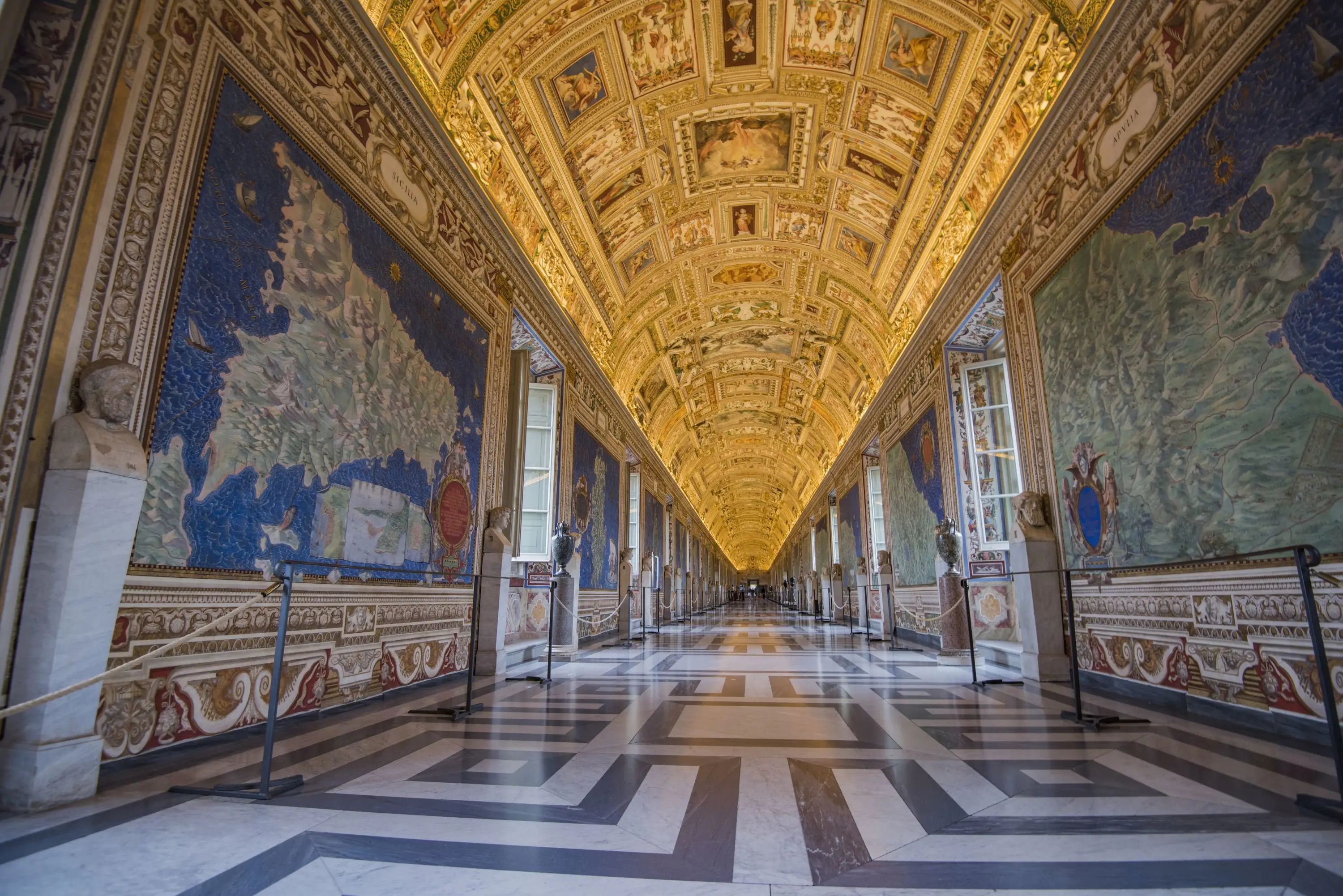
Vatican Museums
 Highlight of Vatican City
Highlight of Vatican CityReserve your spot early to explore the Vatican’s vast collection of priceless art and antiquities.
Far more than a single institution, the Vatican Museums encompass 26 different museums and galleries filled with masterpieces collected and commissioned by the popes over centuries. In addition to Renaissance masterpieces by Raphael, Leonardo da Vinci, Caravaggio, and Titian, you’ll encounter ancient Roman antiquities, the celebrated Gallery of Maps, and rare treasures like Emperor Nero’s red porphyry bathtub. Entire rooms, such as those painted by Fra Angelico, have themselves become iconic works of art. Early booking is highly recommended to avoid long queues.
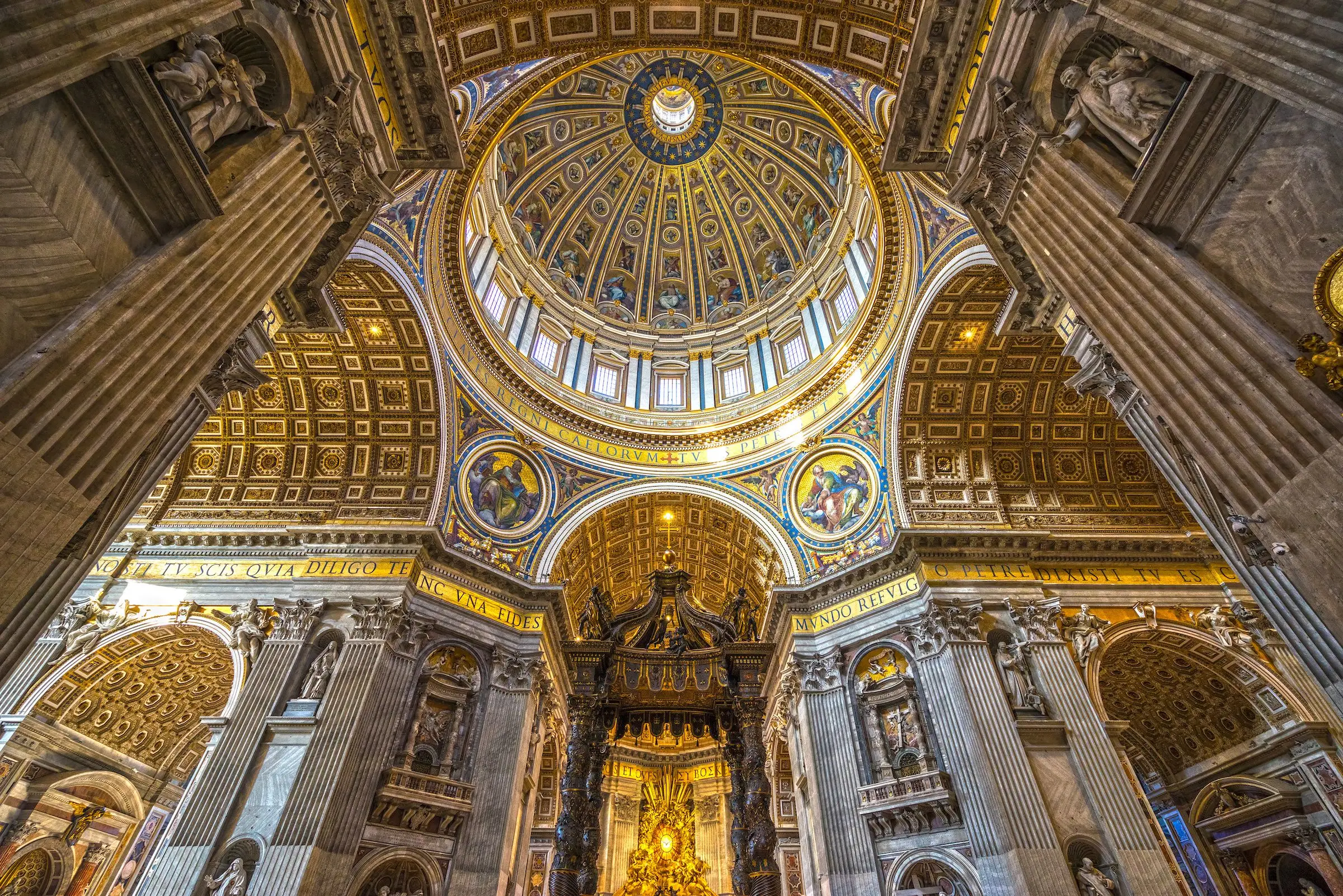
St Peter’s Basilica
 Highlight of Vatican City
Highlight of Vatican CityStep inside the greatest church of Christendom, adorned with masterpieces by Bernini and Michelangelo.
St. Peter’s Basilica stands as the symbolic and spiritual heart of the Catholic Church. Tradition holds that it was built above the tomb of the apostle Peter, the first Bishop of Rome and the "rock" upon which Christ declared His Church would be built. Inside, visitors are treated to a feast of artistic and architectural marvels, from Bernini’s grand sculptures to Michelangelo’s poignant Pietà. The lavish gilded interior dazzles, while the climb to the top of the dome rewards with sweeping views of Rome. Entry to the basilica itself is free, but be prepared for long lines unless you arrive early or purchase a skip-the-line pass. Note: a ticket is required to ascend to the dome.

Vatican Gardens
 Highlight of Vatican City
Highlight of Vatican CityDiscover a peaceful sanctuary of lush gardens hidden behind the Vatican’s fortified walls.
Available exclusively by guided tour, the Vatican Gardens offer a tranquil escape from the bustling crowds of St. Peter’s Square. For centuries, these beautifully landscaped grounds have served as a private retreat for popes. As you wander through manicured lawns, shaded pathways, and fountains, you’ll enjoy serene views of St. Peter’s Basilica rising above the greenery—a peaceful glimpse into the Vatican’s more secluded side.
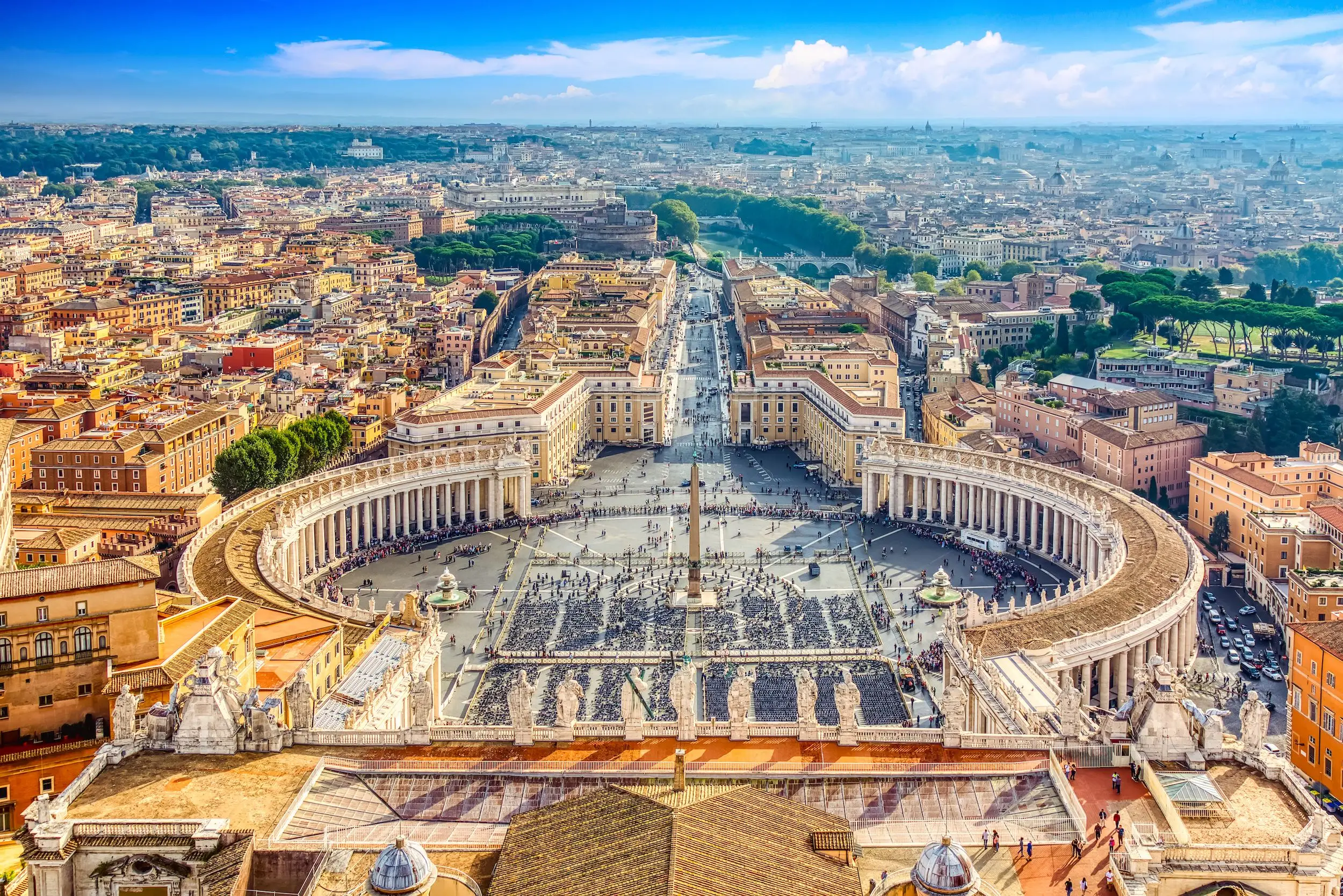
St Peter's Square
 Highlight of Vatican City
Highlight of Vatican CityStand in the iconic square where the faithful gather to witness papal audiences and major celebrations.
Designed by Gian Lorenzo Bernini between 1656 and 1667, St. Peter’s Square is one of the grandest achievements in civic architecture. Though oval in form rather than square, the vast space creates a majestic approach to St. Peter’s Basilica. Two sweeping colonnades lined with 96 statues of saints and martyrs embrace the square, inviting pilgrims and visitors into its embrace. At the center stands a towering 84-foot (26-meter) Egyptian obelisk of red granite, a striking focal point amidst the grandeur.

Sistine Chapel
 Highlight of Vatican City
Highlight of Vatican CityMarvel at Michelangelo’s legendary ceiling and awe-inspiring frescoes inside the Vatican Museums.
Famed around the world, the Sistine Chapel boasts Michelangelo’s 16th-century frescoes, including The Creation of Adam on the ceiling and The Last Judgment covering the altar wall. These masterpieces are considered essential highlights of any Vatican visit and rank among the most important works of art ever created. Gaze upward and prepare to be spellbound by the scale, color, and complexity of Michelangelo’s vision.

Vatican Museums
 Highlight of Vatican City
Highlight of Vatican CityReserve your spot early to explore the Vatican’s vast collection of priceless art and antiquities.
Far more than a single institution, the Vatican Museums encompass 26 different museums and galleries filled with masterpieces collected and commissioned by the popes over centuries. In addition to Renaissance masterpieces by Raphael, Leonardo da Vinci, Caravaggio, and Titian, you’ll encounter ancient Roman antiquities, the celebrated Gallery of Maps, and rare treasures like Emperor Nero’s red porphyry bathtub. Entire rooms, such as those painted by Fra Angelico, have themselves become iconic works of art. Early booking is highly recommended to avoid long queues.

St Peter’s Basilica
 Highlight of Vatican City
Highlight of Vatican CityStep inside the greatest church of Christendom, adorned with masterpieces by Bernini and Michelangelo.
St. Peter’s Basilica stands as the symbolic and spiritual heart of the Catholic Church. Tradition holds that it was built above the tomb of the apostle Peter, the first Bishop of Rome and the "rock" upon which Christ declared His Church would be built. Inside, visitors are treated to a feast of artistic and architectural marvels, from Bernini’s grand sculptures to Michelangelo’s poignant Pietà. The lavish gilded interior dazzles, while the climb to the top of the dome rewards with sweeping views of Rome. Entry to the basilica itself is free, but be prepared for long lines unless you arrive early or purchase a skip-the-line pass. Note: a ticket is required to ascend to the dome.

Vatican Gardens
 Highlight of Vatican City
Highlight of Vatican CityDiscover a peaceful sanctuary of lush gardens hidden behind the Vatican’s fortified walls.
Available exclusively by guided tour, the Vatican Gardens offer a tranquil escape from the bustling crowds of St. Peter’s Square. For centuries, these beautifully landscaped grounds have served as a private retreat for popes. As you wander through manicured lawns, shaded pathways, and fountains, you’ll enjoy serene views of St. Peter’s Basilica rising above the greenery—a peaceful glimpse into the Vatican’s more secluded side.

St Peter's Square
 Highlight of Vatican City
Highlight of Vatican CityStand in the iconic square where the faithful gather to witness papal audiences and major celebrations.
Designed by Gian Lorenzo Bernini between 1656 and 1667, St. Peter’s Square is one of the grandest achievements in civic architecture. Though oval in form rather than square, the vast space creates a majestic approach to St. Peter’s Basilica. Two sweeping colonnades lined with 96 statues of saints and martyrs embrace the square, inviting pilgrims and visitors into its embrace. At the center stands a towering 84-foot (26-meter) Egyptian obelisk of red granite, a striking focal point amidst the grandeur.

Sistine Chapel
 Highlight of Vatican City
Highlight of Vatican CityMarvel at Michelangelo’s legendary ceiling and awe-inspiring frescoes inside the Vatican Museums.
Famed around the world, the Sistine Chapel boasts Michelangelo’s 16th-century frescoes, including The Creation of Adam on the ceiling and The Last Judgment covering the altar wall. These masterpieces are considered essential highlights of any Vatican visit and rank among the most important works of art ever created. Gaze upward and prepare to be spellbound by the scale, color, and complexity of Michelangelo’s vision.

Vatican Museums
 Highlight of Vatican City
Highlight of Vatican CityReserve your spot early to explore the Vatican’s vast collection of priceless art and antiquities.
Far more than a single institution, the Vatican Museums encompass 26 different museums and galleries filled with masterpieces collected and commissioned by the popes over centuries. In addition to Renaissance masterpieces by Raphael, Leonardo da Vinci, Caravaggio, and Titian, you’ll encounter ancient Roman antiquities, the celebrated Gallery of Maps, and rare treasures like Emperor Nero’s red porphyry bathtub. Entire rooms, such as those painted by Fra Angelico, have themselves become iconic works of art. Early booking is highly recommended to avoid long queues.
prev
next


Day 4
Florence
Day 4
Florence





Morning
Piazza Della Signoria
Piazza della Signoria is the political and cultural heart of Renaissance-era Florence, where powerful rulers commissioned legendary artworks that shaped Italian art history. From the grand Palazzo Vecchio, the Medici and other elites sponsored masterpieces from Florence’s greatest artists before relocating to the Palazzo Pitti. Today, the square serves as an open-air museum featuring monumental works like the Neptune Fountain. Nearby, the Bargello Museum offers a world-class collection of sculpture, while the Loggia dei Lanzi showcases striking Renaissance statuary. Still a hub of civic life, the square comes alive with crowds during political events and public speeches delivered from the Palazzo Vecchio’s terrace.

Palazzo Vecchio
Explore the historic seat of Florentine government and the richly decorated halls within.
Show More

Bargello Museum
View one of the most important collections of Renaissance sculpture in Italy, minus the crowds.
Show More

Loggia dei Lanzi
Admire masterpieces of Renaissance sculpture in this historic open-air gallery.
Show More

Palazzo Vecchio
Explore the historic seat of Florentine government and the richly decorated halls within.
Show More

Bargello Museum
View one of the most important collections of Renaissance sculpture in Italy, minus the crowds.
Show More

Loggia dei Lanzi
Admire masterpieces of Renaissance sculpture in this historic open-air gallery.
Show More

Palazzo Vecchio
Explore the historic seat of Florentine government and the richly decorated halls within.
Show More
prev
next

Day 4
Florence


Palazzo Vecchio
 Highlight of Piazza Della Signoria
Highlight of Piazza Della SignoriaExplore the historic seat of Florentine government and the richly decorated halls within.
Built around 1299, Palazzo Vecchio has long been the stronghold of Florentine civic power. Originally a town hall, the structure evolved through centuries of renovation and adaptation. Visiting today is much easier than queuing for the neighboring Uffizi Gallery—simply enter through the front courtyard to reach the ticket area, where lines are usually short. Highlights include the ornate courtyard, Machiavelli’s former office, and the Sala delle Carte, a grand hall adorned with 16th-century maps that illustrate the world as it was known in 1563.

Bargello Museum
 Highlight of Piazza Della Signoria
Highlight of Piazza Della SignoriaView one of the most important collections of Renaissance sculpture in Italy, minus the crowds.
Originally built in 1255 as Florence’s police headquarters, the Palazzo del Bargello was converted into a sculpture museum in 1865. It now houses Italy’s most significant collection of Renaissance sculpture—yet remains refreshingly uncrowded compared to other top sights. Inside, you’ll find masterpieces by giants such as Michelangelo, Donatello, and Cellini, displayed in a striking medieval setting that enhances the drama of their art.

Loggia dei Lanzi
 Highlight of Piazza Della Signoria
Highlight of Piazza Della SignoriaAdmire masterpieces of Renaissance sculpture in this historic open-air gallery.
The Loggia dei Lanzi, completed in 1382, originally served as a ceremonial platform for public events and political announcements. By the 18th century, it was transformed into a display space for Florence’s most iconic sculptures. Notable works include a copy of Cellini’s Perseus with the Head of Medusa—examine it from behind to find Cellini’s hidden self-portrait in the helmet—and Giambologna’s dynamic Rape of the Sabine Woman, carved from a single monumental block of marble. Today, the Loggia continues to dazzle visitors with its concentration of sculptural brilliance.

Palazzo Vecchio
 Highlight of Piazza Della Signoria
Highlight of Piazza Della SignoriaExplore the historic seat of Florentine government and the richly decorated halls within.
Built around 1299, Palazzo Vecchio has long been the stronghold of Florentine civic power. Originally a town hall, the structure evolved through centuries of renovation and adaptation. Visiting today is much easier than queuing for the neighboring Uffizi Gallery—simply enter through the front courtyard to reach the ticket area, where lines are usually short. Highlights include the ornate courtyard, Machiavelli’s former office, and the Sala delle Carte, a grand hall adorned with 16th-century maps that illustrate the world as it was known in 1563.

Bargello Museum
 Highlight of Piazza Della Signoria
Highlight of Piazza Della SignoriaView one of the most important collections of Renaissance sculpture in Italy, minus the crowds.
Originally built in 1255 as Florence’s police headquarters, the Palazzo del Bargello was converted into a sculpture museum in 1865. It now houses Italy’s most significant collection of Renaissance sculpture—yet remains refreshingly uncrowded compared to other top sights. Inside, you’ll find masterpieces by giants such as Michelangelo, Donatello, and Cellini, displayed in a striking medieval setting that enhances the drama of their art.

Loggia dei Lanzi
 Highlight of Piazza Della Signoria
Highlight of Piazza Della SignoriaAdmire masterpieces of Renaissance sculpture in this historic open-air gallery.
The Loggia dei Lanzi, completed in 1382, originally served as a ceremonial platform for public events and political announcements. By the 18th century, it was transformed into a display space for Florence’s most iconic sculptures. Notable works include a copy of Cellini’s Perseus with the Head of Medusa—examine it from behind to find Cellini’s hidden self-portrait in the helmet—and Giambologna’s dynamic Rape of the Sabine Woman, carved from a single monumental block of marble. Today, the Loggia continues to dazzle visitors with its concentration of sculptural brilliance.

Palazzo Vecchio
 Highlight of Piazza Della Signoria
Highlight of Piazza Della SignoriaExplore the historic seat of Florentine government and the richly decorated halls within.
Built around 1299, Palazzo Vecchio has long been the stronghold of Florentine civic power. Originally a town hall, the structure evolved through centuries of renovation and adaptation. Visiting today is much easier than queuing for the neighboring Uffizi Gallery—simply enter through the front courtyard to reach the ticket area, where lines are usually short. Highlights include the ornate courtyard, Machiavelli’s former office, and the Sala delle Carte, a grand hall adorned with 16th-century maps that illustrate the world as it was known in 1563.
prev
next


Day 5
Florence to Venice
Day 5
Florence to Venice







9:20 AM
Transfer to Rail Station
Florence’s main rail hub, Firenze Santa Maria Novella (Firenze S.M.N.), is the departure point for most trains leaving the city. Before arranging a transfer, it’s worth checking if your accommodation is close enough to walk. Public transport—especially trams and buses that stop right next to the station—can be both affordable and time-efficient. Uber operates in Florence, and hotel staff can usually arrange a dependable taxi for you. For added convenience, private transfers are available and often include luggage assistance.

Day 5
Florence to Venice



Day 6
Venice
Day 6
Venice




Morning
San Polo District
The iconic Rialto Bridge links Venice’s two most popular districts—San Marco and San Polo. While San Marco draws crowds with St. Mark’s Square, San Polo offers charm of its own, with some of the city’s oldest streets, scenic canals, and a mix of great dining and tourist traps. Don’t miss the lively Rialto Market, once one of Europe’s busiest trade centers, still buzzing with vendors selling seafood and fresh produce.

Frari Church
Discover major works by Titian, Donatello, and Bellini inside this Gothic church.
Show More

Scuola Grande di San Rocco
View Tintoretto’s most powerful works in this historic confraternity building.
Show More

Rialto Bridge
See Venice’s most iconic bridge, either by crossing it or sailing beneath it.
Show More

Rialto Markets
Browse Venice’s famous fish and produce markets near the Rialto Bridge.
Show More

Frari Church
Discover major works by Titian, Donatello, and Bellini inside this Gothic church.
Show More

Scuola Grande di San Rocco
View Tintoretto’s most powerful works in this historic confraternity building.
Show More

Rialto Bridge
See Venice’s most iconic bridge, either by crossing it or sailing beneath it.
Show More

Rialto Markets
Browse Venice’s famous fish and produce markets near the Rialto Bridge.
Show More
prev
next

Day 6
Venice


Frari Church
 Highlight of San Polo District
Highlight of San Polo DistrictDiscover major works by Titian, Donatello, and Bellini inside this Gothic church.
The Church of Santa Maria Gloriosa dei Frari may be modest from the outside, but it houses some of Venice’s finest art and tombs—including Titian’s Assumption and his own resting place. It’s a must-see, and the audio guide is well worth it.

Scuola Grande di San Rocco
 Highlight of San Polo District
Highlight of San Polo DistrictView Tintoretto’s most powerful works in this historic confraternity building.
This 16th-century Scuola features over two decades of Tintoretto’s work, including the emotional masterpiece The Crucifixion. Located next to the Frari, it’s a hidden gem for art lovers seeking a less crowded but deeply moving experience.

Rialto Bridge
 Highlight of San Polo District
Highlight of San Polo DistrictSee Venice’s most iconic bridge, either by crossing it or sailing beneath it.
Spanning the Grand Canal since the 16th century, the Rialto Bridge is Venice’s most recognized crossing. Its 75-foot-wide stone arch links the San Marco and San Polo districts and replaced a wooden bridge that famously collapsed under a wedding crowd. Now standing on 12,000 wooden pilings, it's surrounded by shops and restaurants and frequently featured in classic gondola photos. For a scenic and inexpensive view from the water, hop aboard Vaporetto Line 1 and glide beneath its arch.

Rialto Markets
 Highlight of San Polo District
Highlight of San Polo DistrictBrowse Venice’s famous fish and produce markets near the Rialto Bridge.
Dating back centuries, the Rialto Market is a sensory experience—colorful stalls, shouting vendors, and freshly caught seafood everywhere. The adjacent produce market fuels Venice’s fresh cuisine. Open until 1pm; closed Sundays (and Mondays for the fish market).

Frari Church
 Highlight of San Polo District
Highlight of San Polo DistrictDiscover major works by Titian, Donatello, and Bellini inside this Gothic church.
The Church of Santa Maria Gloriosa dei Frari may be modest from the outside, but it houses some of Venice’s finest art and tombs—including Titian’s Assumption and his own resting place. It’s a must-see, and the audio guide is well worth it.

Scuola Grande di San Rocco
 Highlight of San Polo District
Highlight of San Polo DistrictView Tintoretto’s most powerful works in this historic confraternity building.
This 16th-century Scuola features over two decades of Tintoretto’s work, including the emotional masterpiece The Crucifixion. Located next to the Frari, it’s a hidden gem for art lovers seeking a less crowded but deeply moving experience.

Rialto Bridge
 Highlight of San Polo District
Highlight of San Polo DistrictSee Venice’s most iconic bridge, either by crossing it or sailing beneath it.
Spanning the Grand Canal since the 16th century, the Rialto Bridge is Venice’s most recognized crossing. Its 75-foot-wide stone arch links the San Marco and San Polo districts and replaced a wooden bridge that famously collapsed under a wedding crowd. Now standing on 12,000 wooden pilings, it's surrounded by shops and restaurants and frequently featured in classic gondola photos. For a scenic and inexpensive view from the water, hop aboard Vaporetto Line 1 and glide beneath its arch.

Rialto Markets
 Highlight of San Polo District
Highlight of San Polo DistrictBrowse Venice’s famous fish and produce markets near the Rialto Bridge.
Dating back centuries, the Rialto Market is a sensory experience—colorful stalls, shouting vendors, and freshly caught seafood everywhere. The adjacent produce market fuels Venice’s fresh cuisine. Open until 1pm; closed Sundays (and Mondays for the fish market).
prev
next


Day 7
Depart Venice
Day 7
Depart Venice


Morning/Mid-Day
Murano & Burano
Escape the bustle of Venice with a trip to Murano and Burano—two nearby islands famed for their artisanal traditions. Watch master glassmakers at work in Murano, then continue to Burano, where lace-making and vividly painted homes create a colorful, relaxed atmosphere. Both islands are easily reachable via Vaporetto from Fondamenta Nove (Murano in about 10 minutes, Burano in around 30) and offer a refreshing, laid-back retreat filled with workshops, cafés, and charming canals.

Museum of Lace (Museo del Merletto)
Discover Burano’s centuries-old tradition of intricate lace-making.
Show More

Burano's Colorful Houses
Stroll among Burano’s famously vibrant, postcard-perfect homes.
Show More

Glass Museum & Murano's Glass-Making Factories
Admire masterpieces of Venetian glass, then watch artisans in action.
Show More

Museum of Lace (Museo del Merletto)
Discover Burano’s centuries-old tradition of intricate lace-making.
Show More

Burano's Colorful Houses
Stroll among Burano’s famously vibrant, postcard-perfect homes.
Show More

Glass Museum & Murano's Glass-Making Factories
Admire masterpieces of Venetian glass, then watch artisans in action.
Show More

Museum of Lace (Museo del Merletto)
Discover Burano’s centuries-old tradition of intricate lace-making.
Show More
prev
next

Day 7
Depart Venice

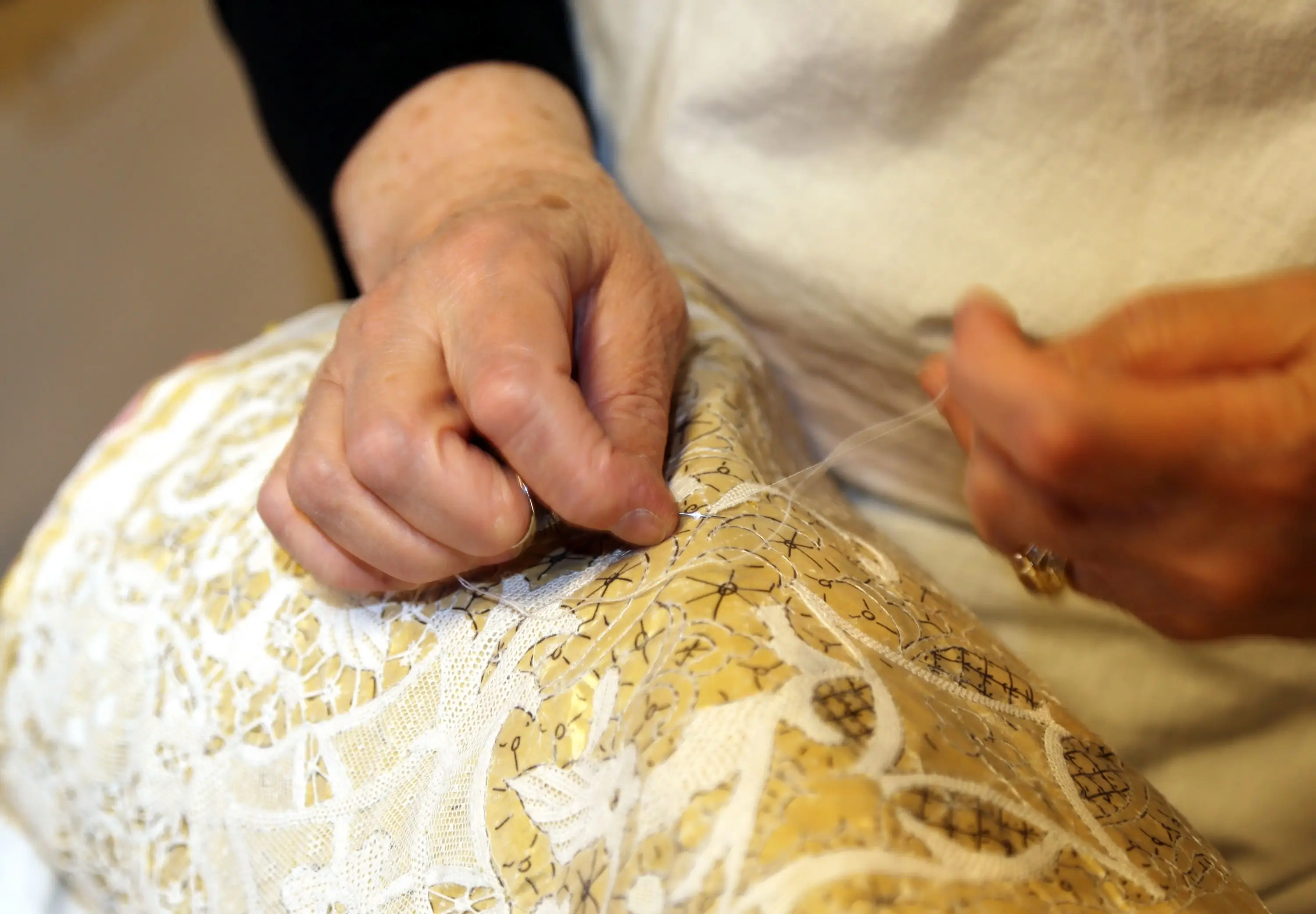
Museum of Lace (Museo del Merletto)
 Highlight of Murano & Burano
Highlight of Murano & BuranoDiscover Burano’s centuries-old tradition of intricate lace-making.
Legend credits a mermaid’s wedding veil with inspiring Burano’s lace tradition. Today, the Lace Museum, housed in a former gothic palace, showcases beautiful examples of this delicate craft, with artifacts from the island’s historic Lace School. Watch live demonstrations and learn how lace helped define Burano’s cultural identity.

Burano's Colorful Houses
 Highlight of Murano & Burano
Highlight of Murano & BuranoStroll among Burano’s famously vibrant, postcard-perfect homes.
Burano’s bright houses—painted in vivid hues regulated by strict rules—create one of the most photogenic spots in Italy. Whether meant to guide fishermen through thick fog or late nights, the colors make a casual walk through the village a truly joyful experience.
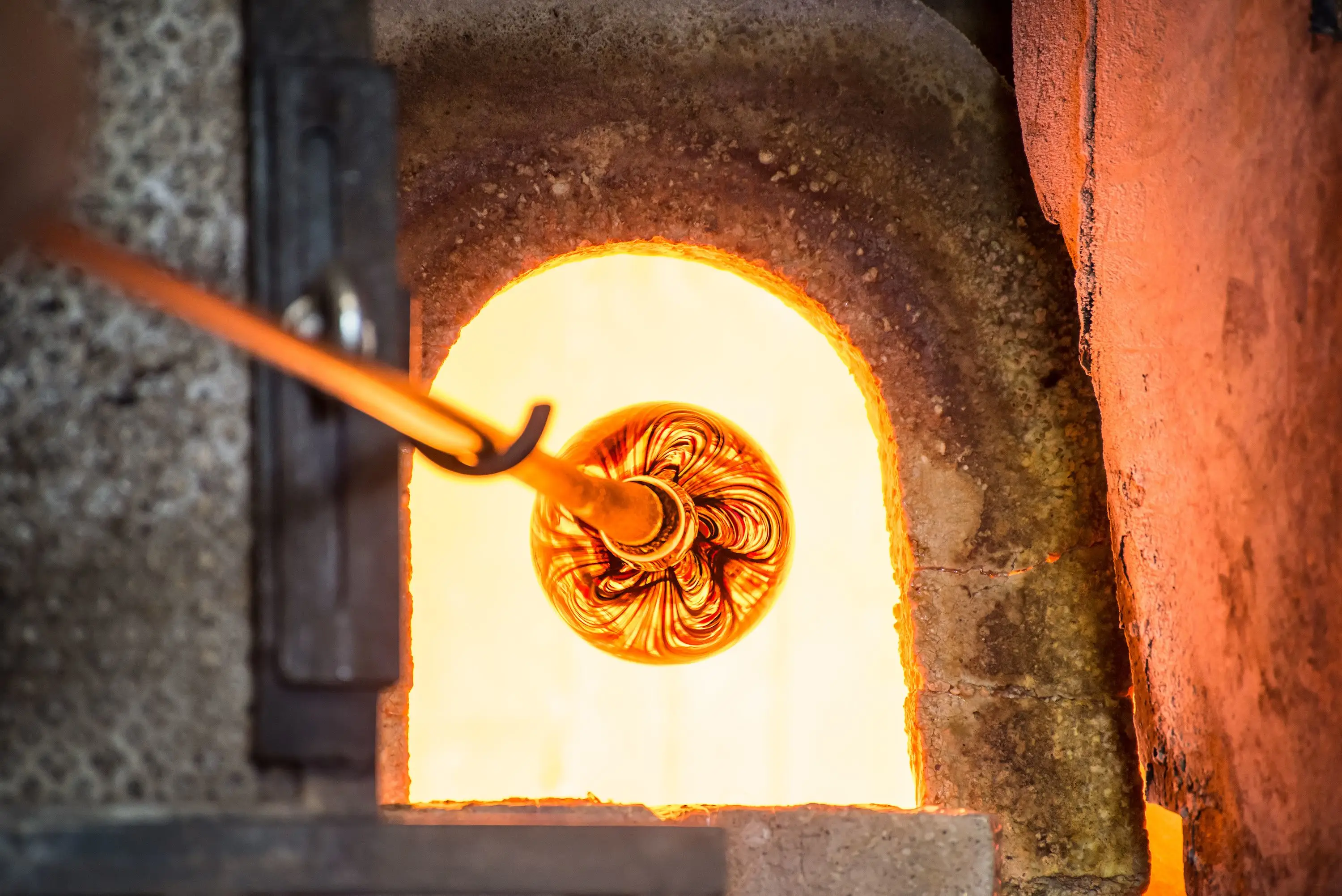
Glass Museum & Murano's Glass-Making Factories
 Highlight of Murano & Burano
Highlight of Murano & BuranoAdmire masterpieces of Venetian glass, then watch artisans in action.
Primarily known as the island of glass-making, Murano has sat at the epicenter Murano has been Venice’s center for glassmaking since the 13th century, when fire hazards forced artisans to relocate from the main islands. Visit the Glass Museum to see stunning works by masters like Venini and Scarpa. Many family-run workshops still offer live demonstrations (often followed by a sales pitch), and you’ll generally find better value farther from the Colonna stop toward the Glass Museum and Basilica of Santi Maria e Donato. If purchasing, ensure careful shipping arrangements and insurance.

Museum of Lace (Museo del Merletto)
 Highlight of Murano & Burano
Highlight of Murano & BuranoDiscover Burano’s centuries-old tradition of intricate lace-making.
Legend credits a mermaid’s wedding veil with inspiring Burano’s lace tradition. Today, the Lace Museum, housed in a former gothic palace, showcases beautiful examples of this delicate craft, with artifacts from the island’s historic Lace School. Watch live demonstrations and learn how lace helped define Burano’s cultural identity.

Burano's Colorful Houses
 Highlight of Murano & Burano
Highlight of Murano & BuranoStroll among Burano’s famously vibrant, postcard-perfect homes.
Burano’s bright houses—painted in vivid hues regulated by strict rules—create one of the most photogenic spots in Italy. Whether meant to guide fishermen through thick fog or late nights, the colors make a casual walk through the village a truly joyful experience.

Glass Museum & Murano's Glass-Making Factories
 Highlight of Murano & Burano
Highlight of Murano & BuranoAdmire masterpieces of Venetian glass, then watch artisans in action.
Primarily known as the island of glass-making, Murano has sat at the epicenter Murano has been Venice’s center for glassmaking since the 13th century, when fire hazards forced artisans to relocate from the main islands. Visit the Glass Museum to see stunning works by masters like Venini and Scarpa. Many family-run workshops still offer live demonstrations (often followed by a sales pitch), and you’ll generally find better value farther from the Colonna stop toward the Glass Museum and Basilica of Santi Maria e Donato. If purchasing, ensure careful shipping arrangements and insurance.

Museum of Lace (Museo del Merletto)
 Highlight of Murano & Burano
Highlight of Murano & BuranoDiscover Burano’s centuries-old tradition of intricate lace-making.
Legend credits a mermaid’s wedding veil with inspiring Burano’s lace tradition. Today, the Lace Museum, housed in a former gothic palace, showcases beautiful examples of this delicate craft, with artifacts from the island’s historic Lace School. Watch live demonstrations and learn how lace helped define Burano’s cultural identity.
prev
next

What's Included In Italian Classics in a Week Trip

Pre-Paid Tours and Activities:
- Grand Guided Walking Tour of the Historic Center
- Florence Sunset Food Tour
- 'First Walk' Guided Tour in Venice
- Private Gondola Ride
- City Card for Rome, including discounts to many popular attractions

Pre-Paid Transportation:
- 2nd Class Train Tickets from Rome-Florence
- 2nd Class Train Tickets from Florence-Venice
- Public Transport Tickets for Venice and Rome
- Private Transfer from Rome Fiumicino to Hotel

Accommodation:
- 2 nights at a hotel of your choice in Rome
- 2 nights at a hotel of your choice in Florence
- 2 nights at a hotel of your choice in Venice

Go Real Travel Mobile App:
- Itinerary Plan & Reservations Info
- Points of Interest
- Detailed Travel Information
- Maps & Directions
Other Trips You May Like

12 Days
From$3175USD

10 Days
From$4600USD

12 Days
From$2999USD

15 Days
From$4266USD

14 Days
From$3559USD

10 Days
From$4033USD

8 Days
From$2424USD

12 Days
From$3129USD

10 Days
From$2600USD

12 Days
From$3175USD

10 Days
From$4600USD

12 Days
From$2999USD

15 Days
From$4266USD

14 Days
From$3559USD

10 Days
From$4033USD

8 Days
From$2424USD

12 Days
From$3129USD

10 Days
From$2600USD
prev
next
Featured Blogs
prev
next
Our Customers Say It Best
Marianne Strydom, Paarl, South Africa
I just wanted to thank you for organizing an amazing trip for me – I packed in so much in such a short period of time and everything was just perfect. The way you do things makes it possible to really get to know the destination, which for me as a travel agent could not have been better. 

Otto Chuy, Los Angeles, California
I am still surprised how everything worked as planned, without a hitch. All instructions in your itinerary were precise and correct. Your suggestions and comments in each of the locations we went to were very helpful. All your guides, without exception, were wonderful and exactly on time. 

Malini Dutta, Boston, Massachusetts
We can't thank you enough for the detailed plans, maps, and suggestions. It really felt that someone was holding our hands and showing us around. We had all the excitement of discovering foreign lands, with none of the problems that can happen while negotiating unfamiliar places. In fact, all the cities felt like home within a few hours of arriving and exploring. 

Bev and Mark Frankel, Williamsburg, Virginia
We could not be more pleased with Go Real Travel! You took the guess work out of things like public transport but still managed to allow us the freedom to tour as we wanted. Our guides were exceptional and every time I saw a Viking Cruise tour of 25 people, I realized the quality experience we were getting with Go Real. 

Marianne Strydom, Paarl, South Africa
I just wanted to thank you for organizing an amazing trip for me – I packed in so much in such a short period of time and everything was just perfect. The way you do things makes it possible to really get to know the destination, which for me as a travel agent could not have been better. 

Otto Chuy, Los Angeles, California
I am still surprised how everything worked as planned, without a hitch. All instructions in your itinerary were precise and correct. Your suggestions and comments in each of the locations we went to were very helpful. All your guides, without exception, were wonderful and exactly on time. 

Malini Dutta, Boston, Massachusetts
We can't thank you enough for the detailed plans, maps, and suggestions. It really felt that someone was holding our hands and showing us around. We had all the excitement of discovering foreign lands, with none of the problems that can happen while negotiating unfamiliar places. In fact, all the cities felt like home within a few hours of arriving and exploring. 

Bev and Mark Frankel, Williamsburg, Virginia
We could not be more pleased with Go Real Travel! You took the guess work out of things like public transport but still managed to allow us the freedom to tour as we wanted. Our guides were exceptional and every time I saw a Viking Cruise tour of 25 people, I realized the quality experience we were getting with Go Real. 



Explore cities in more detail

Milan
Milan is Italy’s most forward-looking city. An international center for fashion, fine dining, and design, it seems as though Milanese people breathe style. From the gleam on your wine glass to the twists of its cathedral’s spires, everything in Milan is finished to perfection. Home to the Italian stock exchange, a world-famous fashion industry, and a frantic business district, Milan is fast-paced and commercially minded. The shopping in Milan is second to none. At the Galleria Vittorio Emanuele II, one of the world’s oldest shopping malls, a glass-iron ceiling soars over brands like Louis Vuitton, Gucci, Massimo Dutti, and Amani. Along with the fashion, Milan’s cathedral, castle, and canals are also must-sees. But to view the city’s most prized possession - Leonardo da Vinci’s Last Supper, you must make an appointment. Tickets to view this mural sell out weeks in advance. It is truly a bucket-list worthy work of art. After a day taking in all the glamor and culture, take a seat in one of Milan’s well-appointed eateries. The Navigli Quarter is packed with restaurants, bars, and cafes, perfect for a relaxed Aperol spritz or pizza along the city’s canals.

Learn About Milan
Build Milan Trip

Cinque Terre
Cinque Terre, a string of five fishing villages in the Liguria region of Italy, is a rare snapshot of a traditional way of life. Rustic and charming, these clusters of pastel houses clinging to steep Mediterranean cliffs hold a special allure. Hiking between the five villages is a popular way to experience the rugged Mediterranean landscape close up. There are no roads here — the only other way to get between the villages is by boat or train. Seafood, hauled in from the azure waters of the sea that laps against the rocky shore, is abundant and delicious here. It pairs well with the local wine, and perhaps a plate of olives. Cinque Terre is a place to take it slow, to breathe in the fresh sea air and bask in the balmy climate, many miles from the chaos and frenzy of the modern world.

Learn About Cinque Terre
Build Cinque Terre Trip
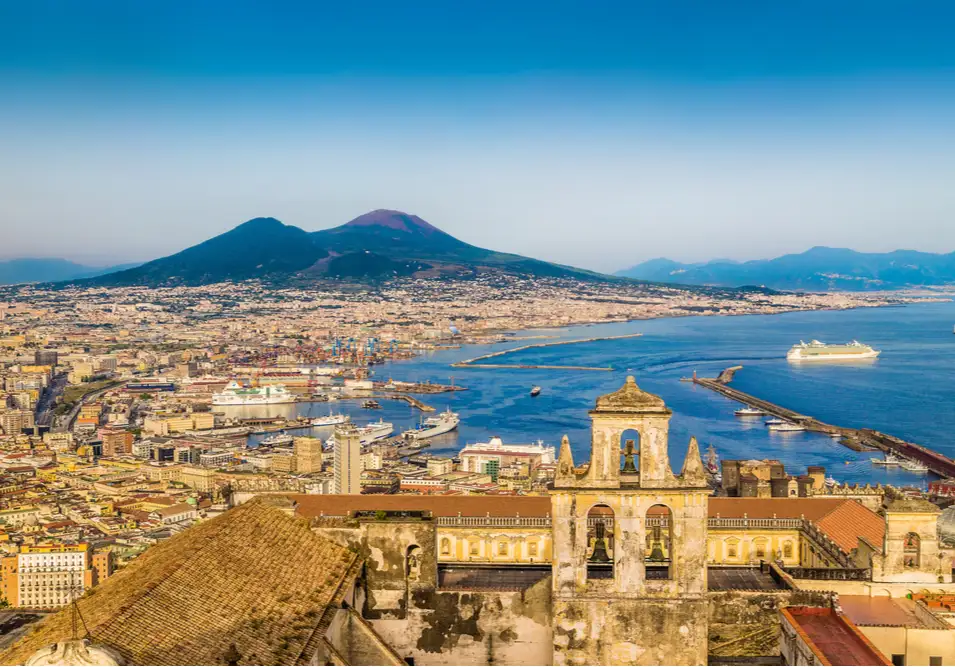
Naples
Gritty and chaotic Naples calls to travelers who want to experience the real Italy. Pressed along the coast of Campania, hilly Naples is jammed with maze-like streets, strung with outdoor clotheslines, descending toward the sea below. A much deserved UNESCO World Heritage site, Naples is famous for its churches, museums, castles, and catacombs. As you navigate the city, you’ll find yourself immersed by its culture and history. You can easily occupy a full day gazing at churches like the Naples Cathedral, San Francesco di Paola, and Cappella Sansevero. If you cast your eyes toward the Gulf of Naples, you’ll see Mount Vesuvius looming over the harbor. This foreboding volcano erupted in AD 79. Not far from the inner city — less than an hour by train — you’ll find the ancient town of Pompeii, its dramatic ruins still preserved in ash from the eruption. One of the best things you can do in Naples is to eat. This is the city where pizza was born. Propped up by its ripe tomatoes, local cheeses, and fresh fish, food from Naples has come to define what many see as the height of Italian cuisine. Everything you taste in Naples seems like a delicacy. Authentic and vivid, Naples is a true Italian city where the ancient world meets the modern-day with a bang.

Learn About Naples
Build Naples Trip

Rome
One of the must-sees of Italy, and indeed all of Europe, Rome is a city with history flowing through its veins. There is an endless amount to see, do, and learn here, with something for every taste and disposition. Rome was the center of Western civilization for a Millenium and during that time, accumulated a list of historical and cultural treasures that no other destination can truly match. The Pantheon, Colosseum, Roman Forum, and Cirus of Maxentius are just a few examples of what can be seen and experienced in Rome, which at times feels more like a giant outdoor museum than a city. At Rome’s heart, you’ll find the Vatican, home of the Roman Catholic Church and the Pope. Here visitors can see the legendary Sistine Chapel. Transcending a mere building, the chapel is a walk-in work of art. Although historical sights can be found on just about every corner, it’s entirely possible to fill a day just wandering around Rome. The city’s charming streets and open Piazzas are filled with beautiful sights and places to sit, grab the best Cappuccino in the world, and enjoy the view.

Learn About Rome
Build Rome Trip
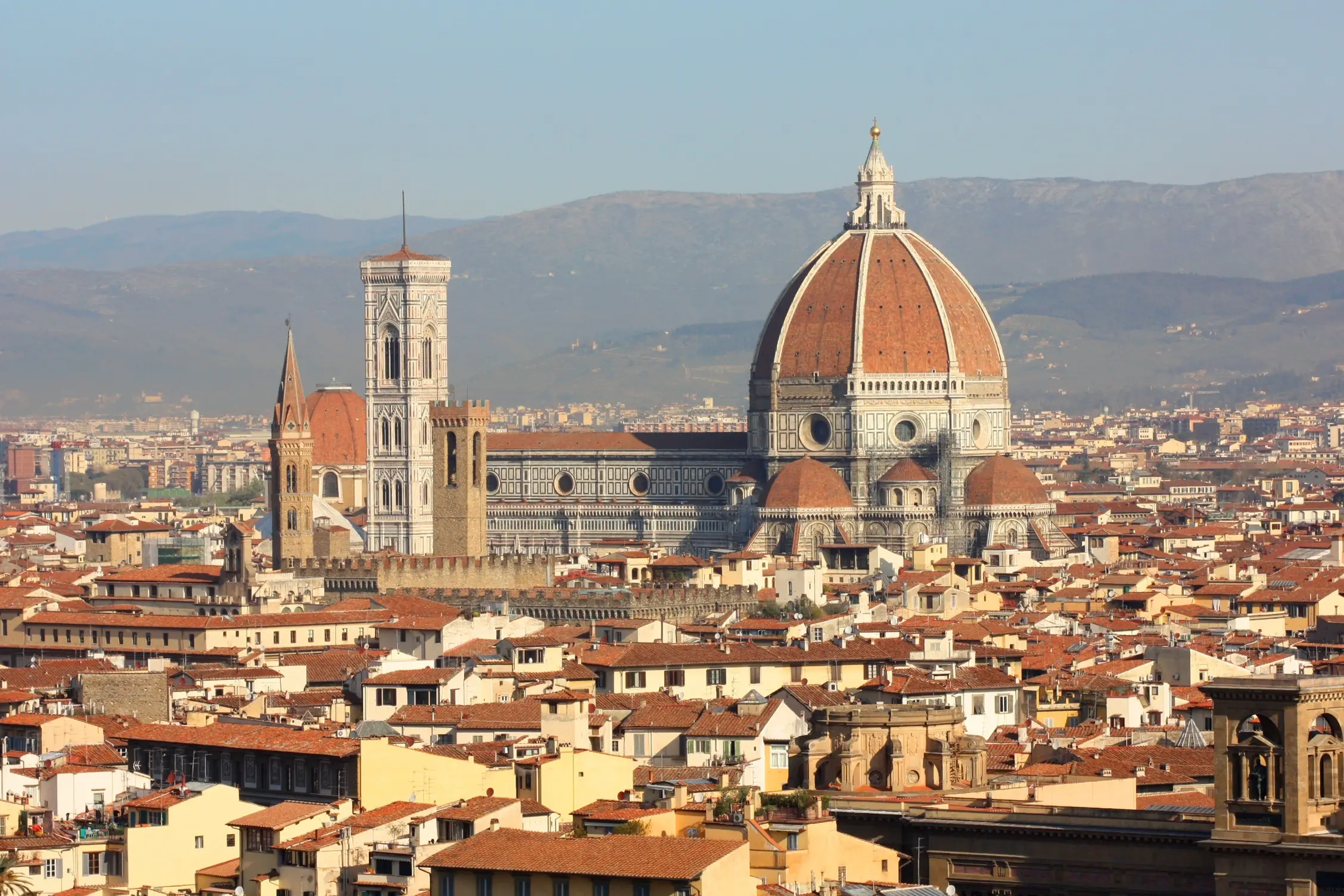
Florence
Culture and history are thick in the air in Florence. Located on the banks of the Arno River in Tuscany, Florence’s past is deeply compelling. The birthplace of the Renaissance, Florence is where innovators like Dante, Machiavelli, Michelangelo, and Da Vinci made their fortunes. Centuries of art, politics, and commerce have left their mark on every stone in this Northern Italian city. In the 15th and 16th centuries, Florentine banks funded new enterprises that went on to change the history of the world. Powerful families like the Medici’s financed some of the finest art in history and pioneered new ways of doing statecraft and politics. As you stand in the Piazzale Michelangelo and gaze upon the city below it’s hard to take it all in at once. It feels like behind every door in Florence might hide a work of genius. Michelangelo’s David and Botticelli’s Primavera can be found just a short walk away. After a long day wandering the streets and gazing at art, fueled by exquisite coffee and gelato, relax like the locals do: with a glass of some of the best wine in the world.

Learn About Florence
Build Florence Trip
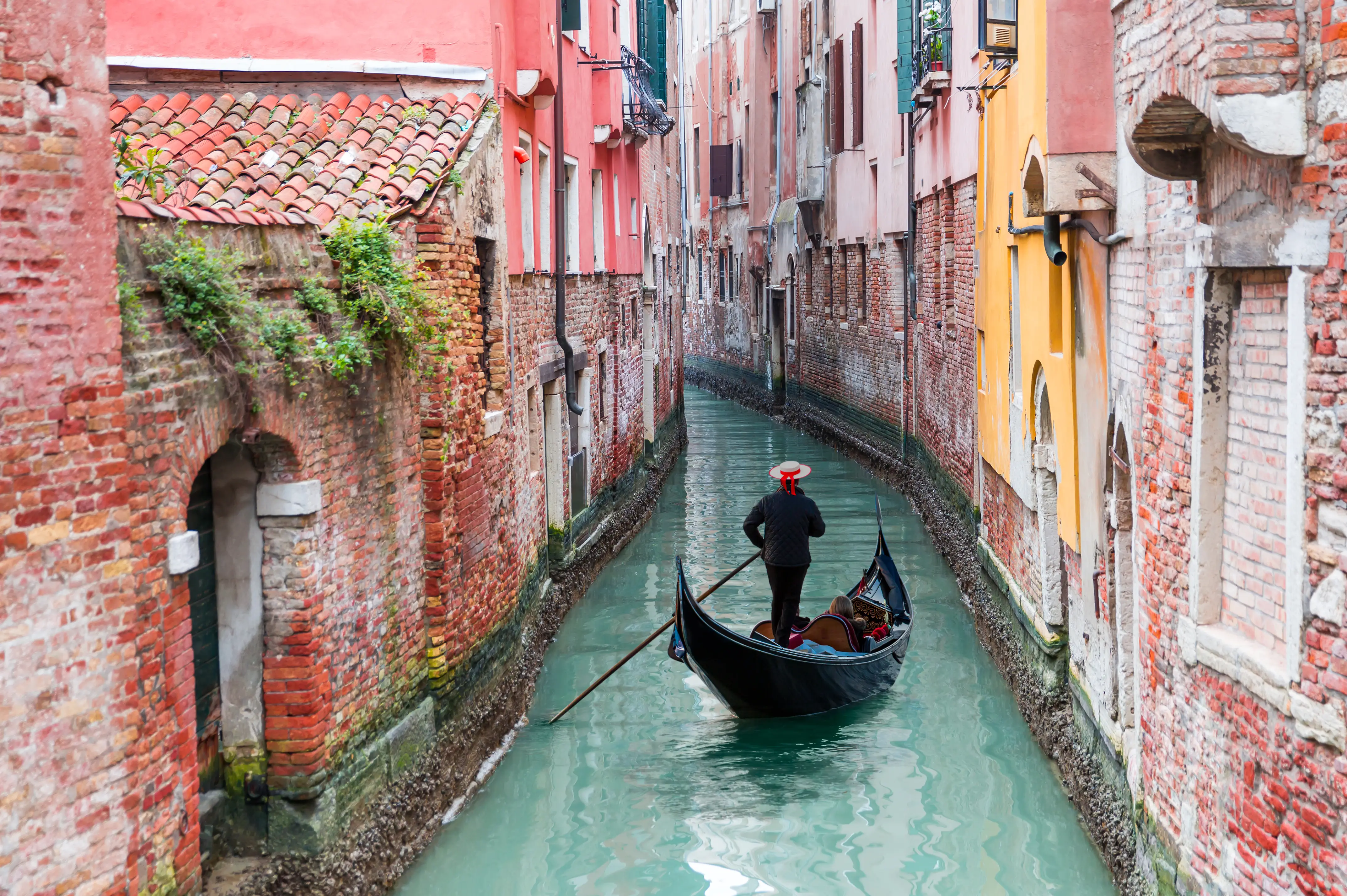
Venice
Venice is a city with no equal. Built on a series of islands on a lagoon, it was once a powerful city-state. Echoes of that old magnificence can be seen everywhere here, from the stunning buildings that rise out of the canals, to the bridges that arc across them. Take a Gondola ride through the canals that form the city’s veins, or wander through the winding streets drinking in the sights. You’ll see Venice attracts tourists in huge numbers, and that’s with good reason. It’s home to a seemingly limitless amount of art, culture, history, and architecture. St Mark’s Basilica, the Doge’s Palace, and the Campanile di San Marco just barely scratch the surface. There’s a 700-year-old market, Rialto, which is still open today. The Ponte di Rialto bridge connects the neighborhoods of San Marco and San Polo, stretching across the Grand Canal. Venice has weathered the last several centuries with elegance and pride, a place that will surpass even your highest expectations.

Learn About Venice
Build Venice Trip

Milan
Milan is Italy’s most forward-looking city. An international center for fashion, fine dining, and design, it seems as though Milanese people breathe style. From the gleam on your wine glass to the twists of its cathedral’s spires, everything in Milan is finished to perfection. Home to the Italian stock exchange, a world-famous fashion industry, and a frantic business district, Milan is fast-paced and commercially minded. The shopping in Milan is second to none. At the Galleria Vittorio Emanuele II, one of the world’s oldest shopping malls, a glass-iron ceiling soars over brands like Louis Vuitton, Gucci, Massimo Dutti, and Amani. Along with the fashion, Milan’s cathedral, castle, and canals are also must-sees. But to view the city’s most prized possession - Leonardo da Vinci’s Last Supper, you must make an appointment. Tickets to view this mural sell out weeks in advance. It is truly a bucket-list worthy work of art. After a day taking in all the glamor and culture, take a seat in one of Milan’s well-appointed eateries. The Navigli Quarter is packed with restaurants, bars, and cafes, perfect for a relaxed Aperol spritz or pizza along the city’s canals.

Learn About Milan
Build Milan Trip

Cinque Terre
Cinque Terre, a string of five fishing villages in the Liguria region of Italy, is a rare snapshot of a traditional way of life. Rustic and charming, these clusters of pastel houses clinging to steep Mediterranean cliffs hold a special allure. Hiking between the five villages is a popular way to experience the rugged Mediterranean landscape close up. There are no roads here — the only other way to get between the villages is by boat or train. Seafood, hauled in from the azure waters of the sea that laps against the rocky shore, is abundant and delicious here. It pairs well with the local wine, and perhaps a plate of olives. Cinque Terre is a place to take it slow, to breathe in the fresh sea air and bask in the balmy climate, many miles from the chaos and frenzy of the modern world.

Learn About Cinque Terre
Build Cinque Terre Trip

Naples
Gritty and chaotic Naples calls to travelers who want to experience the real Italy. Pressed along the coast of Campania, hilly Naples is jammed with maze-like streets, strung with outdoor clotheslines, descending toward the sea below. A much deserved UNESCO World Heritage site, Naples is famous for its churches, museums, castles, and catacombs. As you navigate the city, you’ll find yourself immersed by its culture and history. You can easily occupy a full day gazing at churches like the Naples Cathedral, San Francesco di Paola, and Cappella Sansevero. If you cast your eyes toward the Gulf of Naples, you’ll see Mount Vesuvius looming over the harbor. This foreboding volcano erupted in AD 79. Not far from the inner city — less than an hour by train — you’ll find the ancient town of Pompeii, its dramatic ruins still preserved in ash from the eruption. One of the best things you can do in Naples is to eat. This is the city where pizza was born. Propped up by its ripe tomatoes, local cheeses, and fresh fish, food from Naples has come to define what many see as the height of Italian cuisine. Everything you taste in Naples seems like a delicacy. Authentic and vivid, Naples is a true Italian city where the ancient world meets the modern-day with a bang.

Learn About Naples
Build Naples Trip

Rome
One of the must-sees of Italy, and indeed all of Europe, Rome is a city with history flowing through its veins. There is an endless amount to see, do, and learn here, with something for every taste and disposition. Rome was the center of Western civilization for a Millenium and during that time, accumulated a list of historical and cultural treasures that no other destination can truly match. The Pantheon, Colosseum, Roman Forum, and Cirus of Maxentius are just a few examples of what can be seen and experienced in Rome, which at times feels more like a giant outdoor museum than a city. At Rome’s heart, you’ll find the Vatican, home of the Roman Catholic Church and the Pope. Here visitors can see the legendary Sistine Chapel. Transcending a mere building, the chapel is a walk-in work of art. Although historical sights can be found on just about every corner, it’s entirely possible to fill a day just wandering around Rome. The city’s charming streets and open Piazzas are filled with beautiful sights and places to sit, grab the best Cappuccino in the world, and enjoy the view.

Learn About Rome
Build Rome Trip

Florence
Culture and history are thick in the air in Florence. Located on the banks of the Arno River in Tuscany, Florence’s past is deeply compelling. The birthplace of the Renaissance, Florence is where innovators like Dante, Machiavelli, Michelangelo, and Da Vinci made their fortunes. Centuries of art, politics, and commerce have left their mark on every stone in this Northern Italian city. In the 15th and 16th centuries, Florentine banks funded new enterprises that went on to change the history of the world. Powerful families like the Medici’s financed some of the finest art in history and pioneered new ways of doing statecraft and politics. As you stand in the Piazzale Michelangelo and gaze upon the city below it’s hard to take it all in at once. It feels like behind every door in Florence might hide a work of genius. Michelangelo’s David and Botticelli’s Primavera can be found just a short walk away. After a long day wandering the streets and gazing at art, fueled by exquisite coffee and gelato, relax like the locals do: with a glass of some of the best wine in the world.

Learn About Florence
Build Florence Trip

Venice
Venice is a city with no equal. Built on a series of islands on a lagoon, it was once a powerful city-state. Echoes of that old magnificence can be seen everywhere here, from the stunning buildings that rise out of the canals, to the bridges that arc across them. Take a Gondola ride through the canals that form the city’s veins, or wander through the winding streets drinking in the sights. You’ll see Venice attracts tourists in huge numbers, and that’s with good reason. It’s home to a seemingly limitless amount of art, culture, history, and architecture. St Mark’s Basilica, the Doge’s Palace, and the Campanile di San Marco just barely scratch the surface. There’s a 700-year-old market, Rialto, which is still open today. The Ponte di Rialto bridge connects the neighborhoods of San Marco and San Polo, stretching across the Grand Canal. Venice has weathered the last several centuries with elegance and pride, a place that will surpass even your highest expectations.

Learn About Venice
Build Venice Trip
prev
next


 Map of Your Itinerary Route
Map of Your Itinerary Route
Zoom In to the cities to see your itinerary in more detail


 4.8
4.8 
